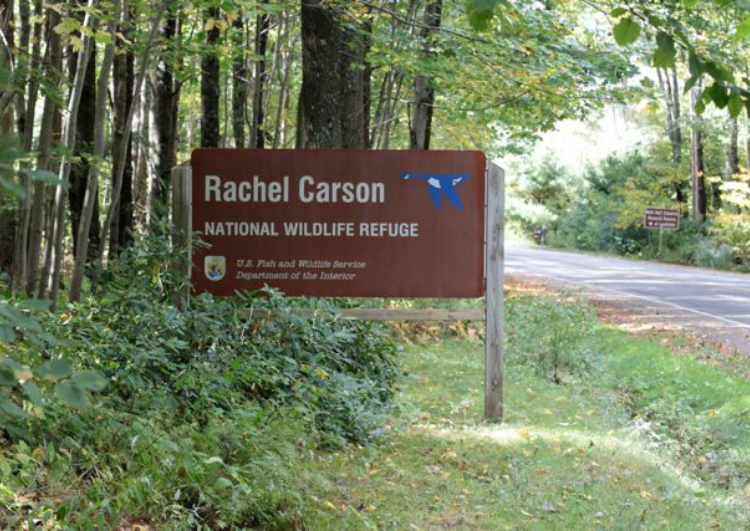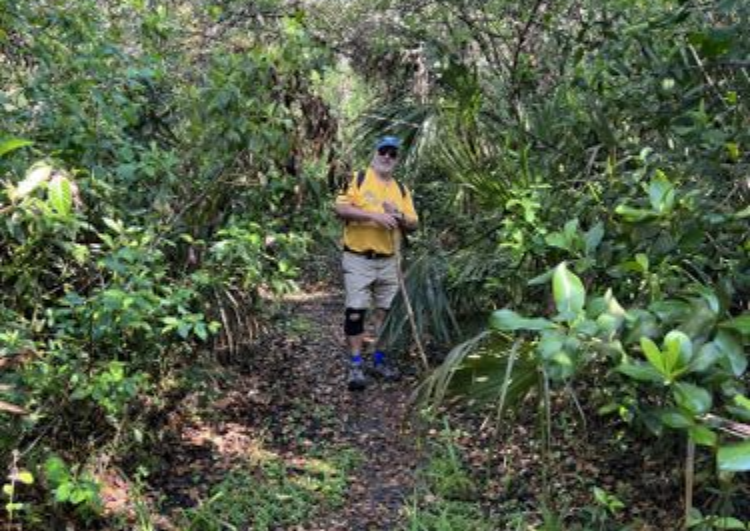
The Rachel Carson National Wildlife Refuge is located along the coast of Maine, primarily in the southern part of the state. It spans over 9,000 acres and protects valuable salt marshes, estuaries, and other coastal habitats. The refuge is divided into several units, with headquarters located in Wells, Maine.


The Rachel Carson National Wildlife Refuge was established in 1966. It was created to protect valuable coastal habitats and wildlife along the southern coast of Maine, in honor of Rachel Carson, a renowned marine biologist, conservationist, and author.


The Rachel Carson National Wildlife Refuge was established by the United States Congress in 1966. While it was not "invented" by any one individual, its establishment was influenced by the conservation efforts of many individuals and organizations dedicated to preserving coastal habitats and wildlife. The refuge was named in honor of Rachel Carson, whose groundbreaking book "Silent Spring" raised awareness about the environmental impacts of pesticides and inspired the modern environmental movement.

The Rachel Carson National Wildlife Refuge is named in honor of Rachel Carson, a prominent marine biologist, conservationist, and author. Carson is best known for her influential book "Silent Spring," published in 1962, which documented the harmful effects of pesticides, particularly DDT, on the environment and human health. Her work sparked widespread concern about the use of chemicals in agriculture and led to significant changes in environmental policy, including the banning of DDT in the United States.
Given Carson's profound impact on environmental awareness and conservation efforts, naming the refuge after her serves as a tribute to her legacy and contributions to the field of environmental science and advocacy.



The Rachel Carson National Wildlife Refuge offers a variety of trails and natural landscapes that make it appealing to hiking enthusiasts:
1. **Scenic Coastal Trails:** Many of the refuge's trails wind through picturesque coastal habitats, including salt marshes, estuaries, and woodlands. Hikers can enjoy stunning views of the Maine coastline and observe a diverse array of wildlife along the way.
2. **Biodiversity:** The refuge is home to a wide range of plant and animal species, making it an excellent destination for nature lovers. Hikers may encounter various bird species, including shorebirds, waterfowl, and migratory birds, as well as mammals such as deer and small mammals.
3. **Trails for All Skill Levels:** The refuge offers trails suitable for hikers of all skill levels, from easy, flat paths suitable for beginners to more challenging trails with rugged terrain and elevation changes for experienced hikers. This diversity of trails ensures that there is something for everyone to enjoy.
4. **Educational Opportunities:** The refuge often provides interpretive signage along the trails, offering information about the local ecology, wildlife, and conservation efforts. This educational aspect enhances the hiking experience by providing insight into the natural world.
5. **Peaceful Environment:** With its tranquil coastal setting and relatively low levels of human disturbance, the Rachel Carson National Wildlife Refuge provides a peaceful and serene environment for hiking. It's a great place to escape the hustle and bustle of everyday life and connect with nature.
Overall, the combination of scenic beauty, biodiversity, accessibility, educational opportunities, and peaceful surroundings makes the Rachel Carson National Wildlife Refuge an ideal destination for hiking lovers.




Yes, the Rachel Carson National Wildlife Refuge can be enjoyed for hiking throughout the year, with each season offering its own unique experience:
1. **Spring:** Spring brings new life to the refuge, with migratory birds returning to breed and flowers blooming along the trails. Hiking during this time allows you to witness the renewal of nature and the vibrant colors of springtime.
2. **Summer:** Summer is a popular time for hiking in the refuge, as the weather is typically warm and sunny. Hikers can enjoy longer days on the trails and may have the opportunity to spot a wide variety of wildlife, including nesting birds and butterflies.
3. **Fall:** Fall foliage makes for stunning hiking scenery in the Rachel Carson National Wildlife Refuge. The changing colors of the leaves create a picturesque backdrop for outdoor adventures, and cooler temperatures make for comfortable hiking conditions.
4. **Winter:** While winter hiking in Maine can be chilly, it offers a unique experience for outdoor enthusiasts. Hiking trails may be less crowded, and the refuge's coastal landscapes take on a different beauty in the winter months. Snowshoeing and cross-country skiing are also popular activities during this time.
Regardless of the season, hikers should always be prepared for changing weather conditions and dress accordingly. Additionally, it's a good idea to check trail conditions and any advisories before heading out, especially during the winter months.